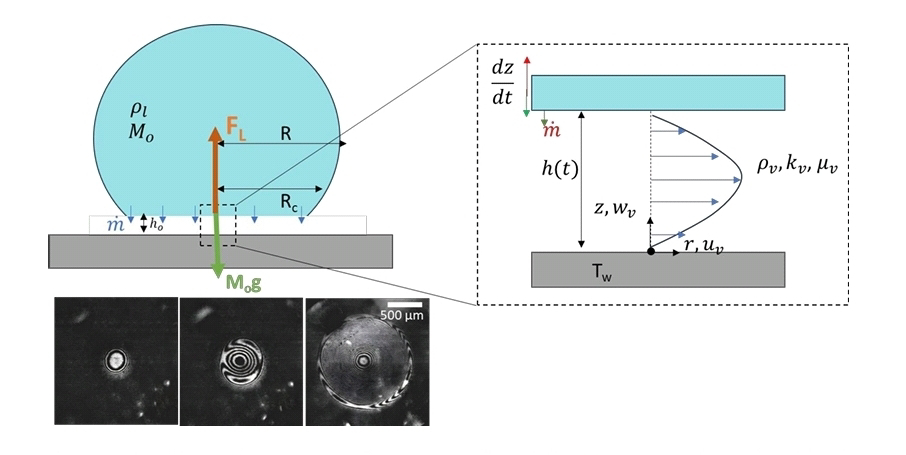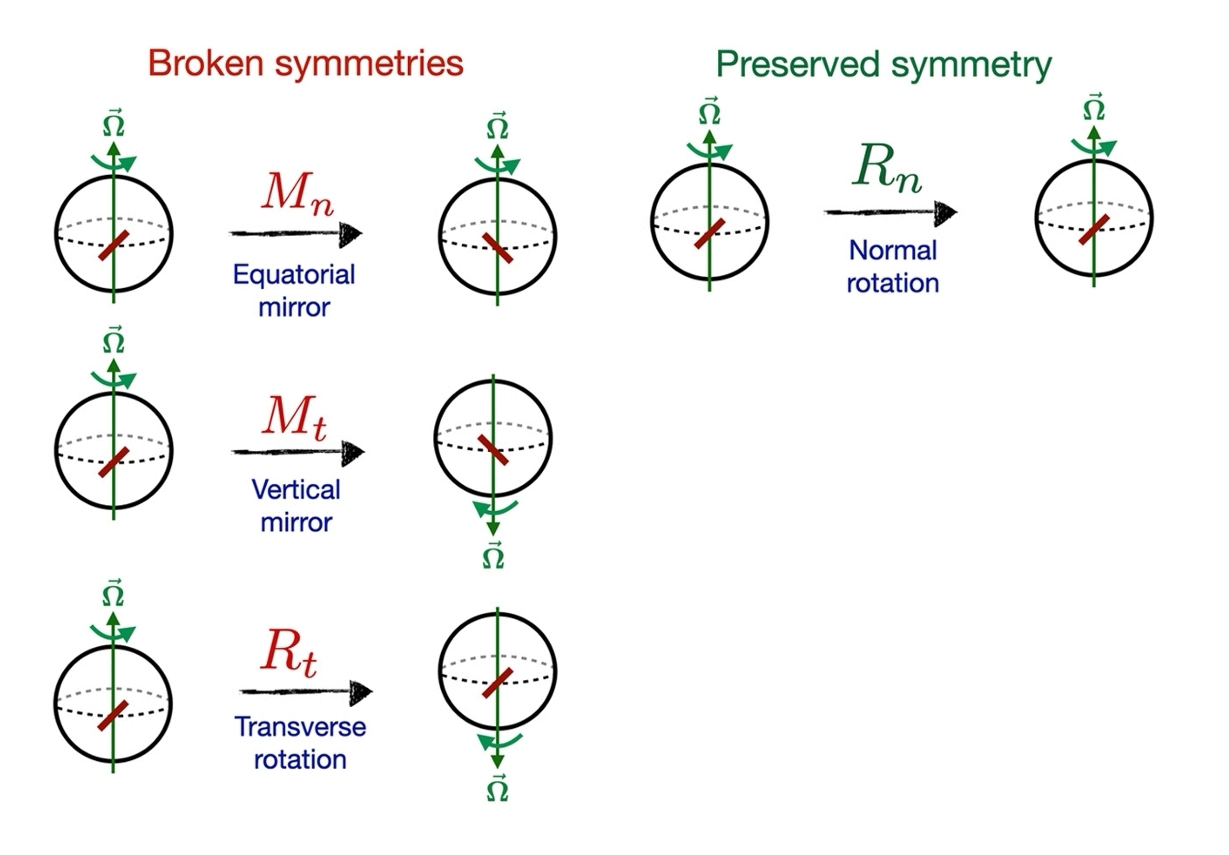<< The levitating Leidenfrost (LF) state of a droplet on a heated substrate is often accompanied by fascinating behaviors such as star-shaped deformations, self-propulsion, bouncing, and trampolining. These behaviors arise due to the vapor flow instabilities at the liquid-vapor interface beneath the droplet at sizes typically comparable to the capillary length scale of the liquid. >>
AA << report on the spontaneous bouncing, trampolining, and hovering behavior of an unconstrained LF water droplet. (..) the water droplet exhibits an increase in bouncing height at specific radii with intermittent reduction in the height of bounce leading to a quiescent LF state. The reemergence of the trampolining behavior from the quiescent hovering state without any external forcing is observed at sizes as low as 0.1 times the capillary length. (AA) attribute the droplet bouncing behavior to the dynamics of vapor flow beneath the LF droplet. >>
AA << propose that the trampolining behavior of the droplet at specific radii is triggered by harmonic and subharmonic resonance between the natural frequency of the vapor layer and Rayleigh frequency of the droplet. This proposed mechanism of resonance-driven trampolining of LF droplets is observed to be applicable for different liquids irrespective of the initial volume and substrate temperatures, thus indicating a universality of the behavior. (AA) attribute the intermittent trampolining events to the change in the natural frequency of the droplet and the vapor layer due to evaporative mass loss. >>
Pranjal Agrawal, Susmita Dash. Reemergence of Trampolining in a Leidenfrost Droplet. arXiv: 2408.02335v1 [physics.flu-dyn]. Aug 5, 2024.
Also: drop, in https://www.inkgmr.net/kwrds.html
Keywords: gst, drop, droplet, droploid, behav, behaviour


